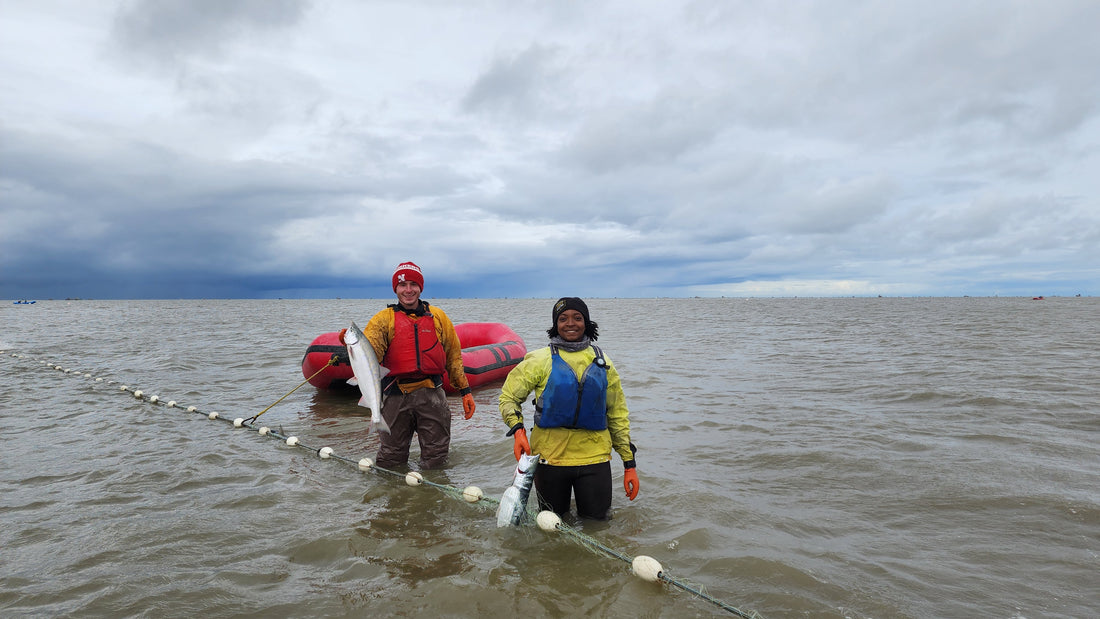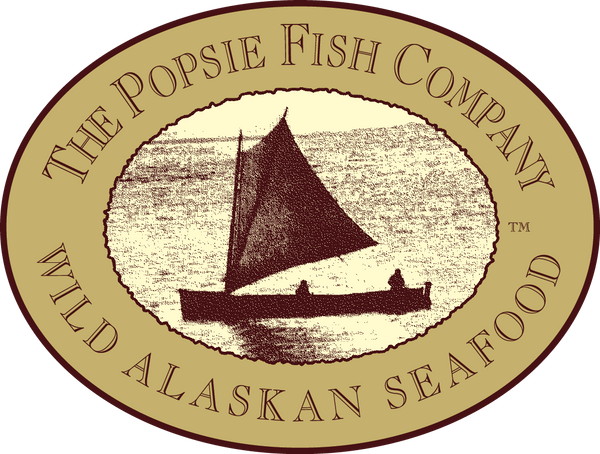
What is Set Netting?
In the vast expanse of our oceans, where currents weave intricate patterns and marine life thrives in harmony, lies a method of fishing deeply rooted in tradition - set netting.
Set netting is a fishing technique that has been practiced for centuries, predating many modern industrial methods. The process involves strategically placing nets in the path of migrating fish species, allowing them to swim into the mesh where they become entangled. Unlike some other fishing methods, set nets are typically stationary, remaining in place for extended periods, and are often anchored to the seabed and attached to buoys on the surface. Different types of net fishing target different species of fish; set-netting targets migrating wild salmon and sea trout.
Sustainability
Set nets, also known as gillnets, are long rectangular vertical panels of netting that hang from a line on the surface of the water. The photo attached to this article is a great example of what set nets look like from above. Fish are caught in these nets when they swim into them, but are unable to fit through the holes. They then try to back out of the net, tangling their gills and fins.
What sets set netting apart from many other fishing practices is its sustainability. By selectively targeting specific species and allowing non-targeted species to swim freely, set netting minimizes bycatch - the unintended capture of marine life. This targeted approach helps maintain the delicate balance of marine ecosystems by reducing the impact on non-targeted species and preserving biodiversity. An example of this is using nets that have large holes when targeting a large species like salmon, allowing smaller non-targeted species to swim through unharmed.
Community
Beyond its environmental benefits, set netting plays a vital role in the social and economic fabric of coastal communities around the world. For many, fishing is not just a livelihood but a way of life, deeply ingrained in cultural traditions passed down through generations. Set netting provides sustainable employment opportunities for local fishermen, supporting coastal economies while fostering a sense of pride and connection to the sea.
Challenges and Innovations
While set netting offers numerous advantages, it is not without its challenges. Issues such as overfishing, habitat degradation, and climate change continue to threaten marine ecosystems and the sustainability of fishing practices worldwide. However, through innovation and collaboration, solutions are emerging to address these challenges. Technological advancements, such as the use of eco-friendly materials and gear modifications to reduce bycatch, are helping to enhance the sustainability of set netting. Additionally, greater emphasis on science-based management and conservation measures can help ensure the long-term viability of fisheries and the preservation of our oceans for future generations.
Set netting stands as a shining example of how traditional fishing practices can coexist harmoniously with modern conservation efforts. By prioritizing sustainability, minimizing environmental impact, and supporting coastal communities, set netting offers a glimpse into a future where the bounty of the ocean can be enjoyed responsibly and indefinitely. For more insights into sustainable fishing practices and their impact on our oceans, be sure to check out our blog post titled “Wild-Caught vs. Farm Raised Fish: What’s the Catch?”
Together, let’s ensure a healthier future for our oceans and all who depend on them.
Sources
Bycatch Management Information System (BMIS). (n.d.). Gillnets. Gillnet. https://www.bmis-bycatch.org/fishing-gear/gillnet#:~:text=Fish%20are%20caught%20in%20gillnets,back%20out%20of%20the%20net.
“Drift, Gill and Set Nets.” Sustain, Good Catch, www.sustainweb.org/goodcatch/drift_gill_and_set_nets/. Accessed 4 Apr. 2024.
Reducing bycatch through innovation. NOAA. (2022, August 25). https://www.fisheries.noaa.gov/podcast/reducing-bycatch-through-innovation
